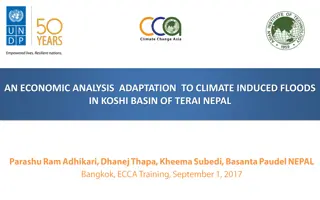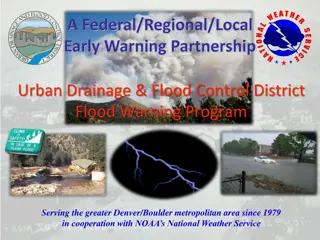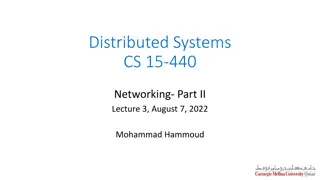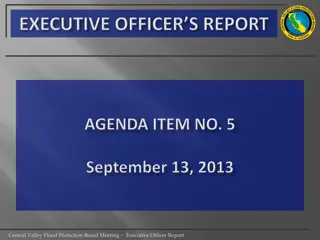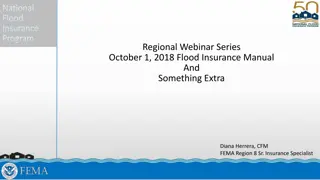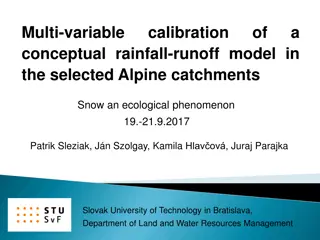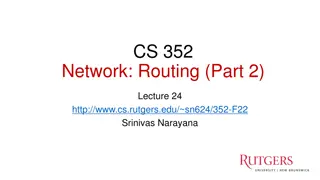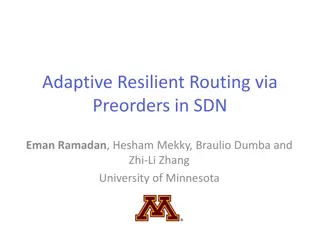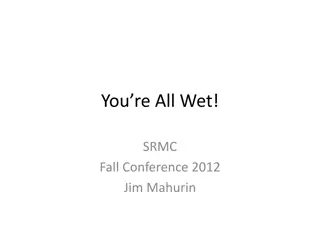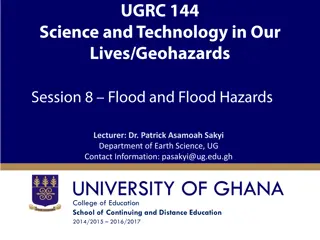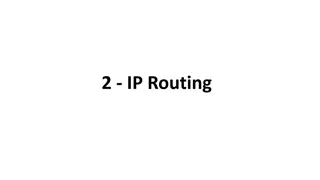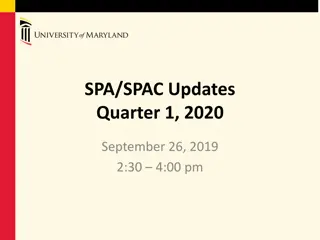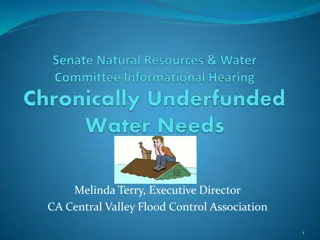Flood Routing and Hydrology of Ungauged Catchments
This publication by Mesfin M. explores the important aspects of flood routing and hydrology in ungauged catchments. The content covers various topics related to analyzing and managing floods, especially in areas without monitoring stations. With detailed insights and informative slides, this resource serves as a valuable guide for understanding and addressing flood risks in diverse geographical contexts.
Download Presentation

Please find below an Image/Link to download the presentation.
The content on the website is provided AS IS for your information and personal use only. It may not be sold, licensed, or shared on other websites without obtaining consent from the author. Download presentation by click this link. If you encounter any issues during the download, it is possible that the publisher has removed the file from their server.
E N D
Presentation Transcript
CHAPTER EIGHT FLOOD ROUTING AND HYDROLOGY OF UNGAUGED CATCHMENTS By Mesfin M. (B.Sc. In WRIE, M.Sc. In WRE)
? ???+ ?? ? ?? ?? ? ???+ ?? =
Synthetic Unit Hydrograph In the absence of rainfall-runoff data, unit hydrographs can be derived by synthetic means. A synthetic unit hydrograph is a unit hydrograph derived following an established formula, without the need for rainfall- runoff data analysis. The development of unit hydrograph requires relation between physical geometry of basin and resulting hydrographs.
Snyders Method Basin lag tp (hrs) which is the time between center of mass of unit rainfall excess to the peak of the unit hydrograph is ??= ??(?.??)0.3 ??
Where L = distance from gaging station (outlet) to catchment boundary (divide) along the main stream (km) Lc= distance from gaging station to centroid of catchment area, measured along the main stream to the nearest point(km) Ct=a coefficient depending on units and drainage characteristics.
The peak discharge Qp (cumec) for the unit hydrograph is ??=2.78??? ?? Where A = Catchment area (km2) Cp = a coefficient tp= basin lag (hrs) The duration of surface runoff, or the time base of unit hydrograph is ?? 24 ? = 3 + 3 ???? A standard duration of rainfall excess, tr (hrs) is ?? 5.5days ??=
For any other duration ??, a modified basin lag time ?? is = ??+?? ?? ?? ?? 4 = basin lag for a storm duration ?? Where ?? Sketch the unit hydrograph so that it satisfies the above derived parameters, and also the area under the hydrograph represents a direct runoff of 1 cm. While sketching the unit hydrograph, it is convenient to use the widths W50 and W75 of the hydrograph at 50 % and 75% of the height of the peak flow ordinate, respectively. 5.9 )1.08 ?50= (?? ?75=?50 3.4 )1.08 1.75= (?? is the peak discharge per unit area (cumecs/km2) and W50 and W75 are in where ?? hours
Example: Derive a 3-hr unit hydrograph for an ungaged basin from the following data. Length L =32 km; length Lc=25 km; Area of catchment =325 km2 Assume Ct=0.9 and Cp=1.8





